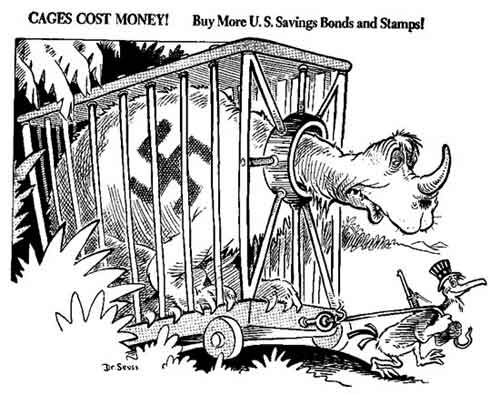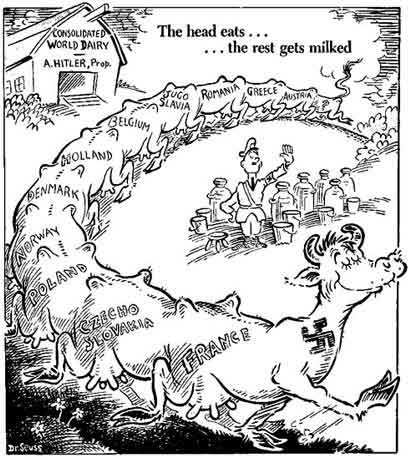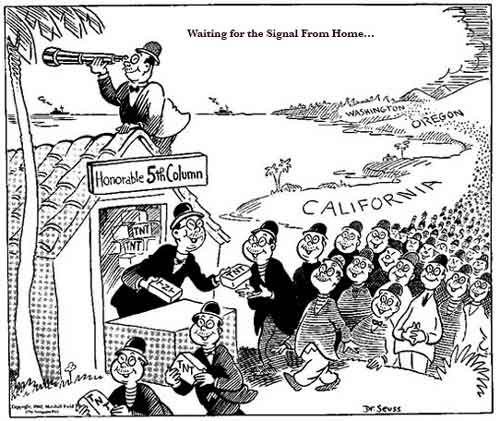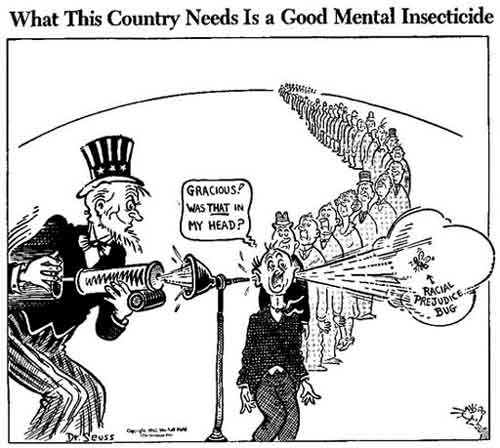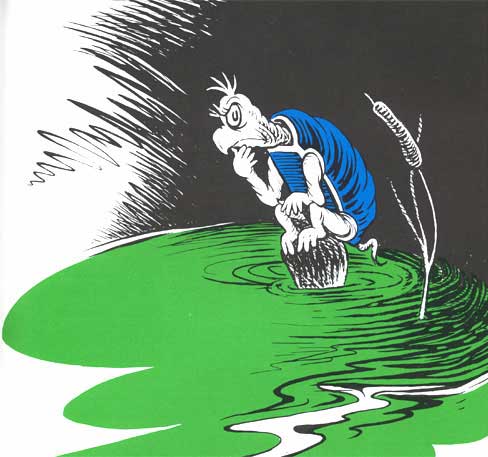

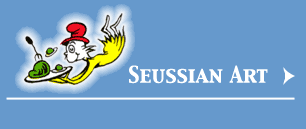


Seuss won a Pullitzer prize in 1984 for his contributions to children's literature. However, before this, we drew numerous cartoons with a very different demeanor. Seuss worked for many years as a political cartoonist for New York's PM magazine, publishing numerous cartoons with varying degrees of opinion...
| Many of the cartoons advertised war bonds, trying to get people to fund the U.S. Involvement in World War II. The Nazis were portrayed often as horrid beasts, such as this one needing to be caged. Seuss often used personification in his political art, as he was much better at drawing fictional animals than he was of normal looking people. |
| A good majority of the political cartoons were anti-Hitler. This cartoon here once again uses some personification, but also has a drawing of Hitler. Seuss knew his talents did not lie in human drawings, so he would typically use charicatures type drawings of the same person with different features. This is evident in the congruency throughout his cartoons and books. The most interesting thing is how the art, although depicting a very sore subject, is always cheerful, as if Seuss was always destined to write for children. |
| This very offensive and racist cartoon was one of many that Seuss printed. In an interview later in life, Seuss was quoted on his disdain and shame for many of things he had drawn during World War II. This cartoon, showing Japanese-Americans taking TNT and waiting for a signal, is a typical Seussian cartoon with its complicated scenery. Seuss has always seemed interested in capturing an audience attention by forcing them to delve into an image. |
| Just four months after the cartoon above was published, Seuss drew this cartoon in June of 1942. After realizing how racist many of his cartoons were, Seuss drew this in an attempt to lead the country toward a more politically correct stance. The art in this cartoon is a simple picture, with the lines of people that seem to go on forever, much like lines in other Seuss books. But the characters are drawn unhappy, suggesting Seuss' disapproval of the state of the country. |
| It wasn't only Seuss' cartoons for PM that carried political idealism, even the books he wrote later in life often had political ties. While books like Hop on Pop were obviously simple children's books, others had deeper meanings. Yertle the Turtle was modeled after Hitler, trying to build a bigger kingdom. Horton Hears a Who was a story about Japan, that showed Seuss' progression from his racist views against Japan to an understanding of the country. One of Seuss' last books, The Butter Battle Book was a very controversial parody of the Cold War which drew a lot of good and bad attention to Dr. Seuss. (Minear 1999) |
While not as much is known about Seuss' advertisements and political cartoons, it would be tough to find any child who hasn't read at least one of his books. Dr. Seuss is most famous for the artwork in his books, and that is shown in its forms in the next section......
